Finding a quality place for people to live is one of the biggest challenges in addressing homelessness, according to Coun. Kerry Jang.
“Not just anyplace. We have our run-down SROs, but people need a place that’s decent, that’s clean and warm, that gives them dignity, that gives them a place to be stable and to start to heal,” he said during a press conference Wednesday morning near Main and Terminal where the country’s first ever moveable, modular housing complex is being assembled on city-owned land.
Expected to open for occupancy in mid-February, it will temporarily house people on low or fixed incomes at a rent of $375 a month while permanent housing is being built, which can take years.
The three-storey complex is being built by a company called Horizon North and will feature 40 micro-units — 36 measuring 250-square-feet, along with four larger wheelchair-accessible units located on the main floor. Each unit, which costs $80,000 to $90,000 to build, has its own bathroom with a shower, a basic kitchen and a closet. There’s enough space for a bed, small dining area and a few pieces of furniture. There will be indoor and outdoor common amenity space, and a central laundry.
A sample unit was on display to the public in late October when the city hosted the Re:Address Housing Affordability summit.
They were built at a factory in Kamloops and shipped to Vancouver. The installation is expected to take six days and be completed by Christmas Eve.
“As you can see behind us. It looks like regular housing. This ain’t no trailer park,” Jang told reporters.
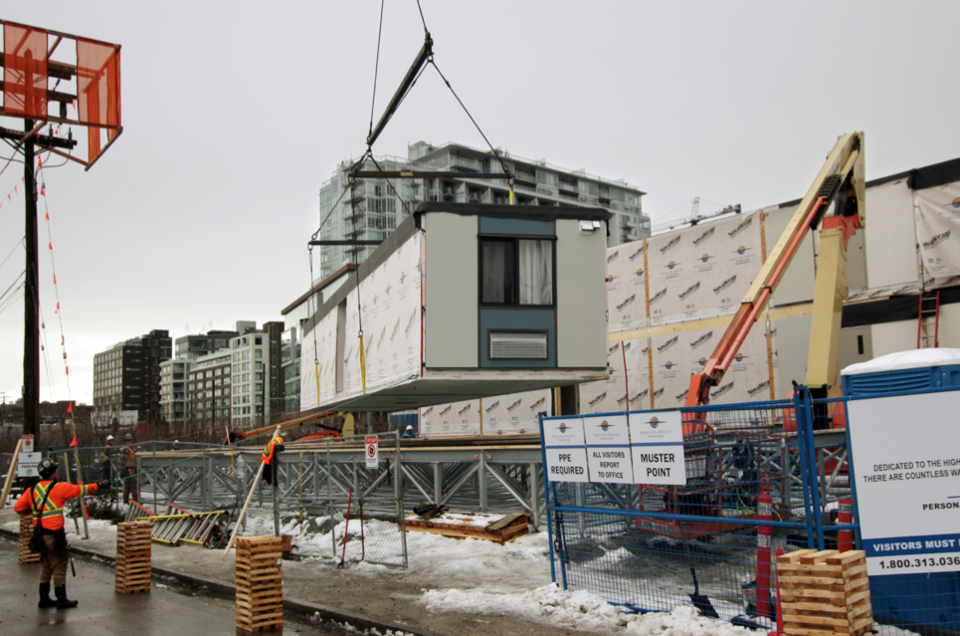
Durable materials are being used on the project, including high impact-resistant drywall in the corridors, vinyl wall covering and resilient flooring.
The complex will remain on the Main and Terminal site for up to five years or, if necessary, until the land gets developed. It can then be dismantled, transported and re-assembled on another site that’s not being used or awaiting development. Units have 30- to 40-year lifespans.
Jang said he hopes more such complexes are built around Vancouver.
Joe Kiss, vice-president of business development-commercial at Horizon North, said moving the complex to another site in the future will cost a fraction of the cost of constructing a new building from scratch.
“As such, this modular building technique is ideal for sites awaiting permanent development, similar to this one, and will prove to be an important tool assisting to meet Vancouver’s affordable housing needs,” he said.
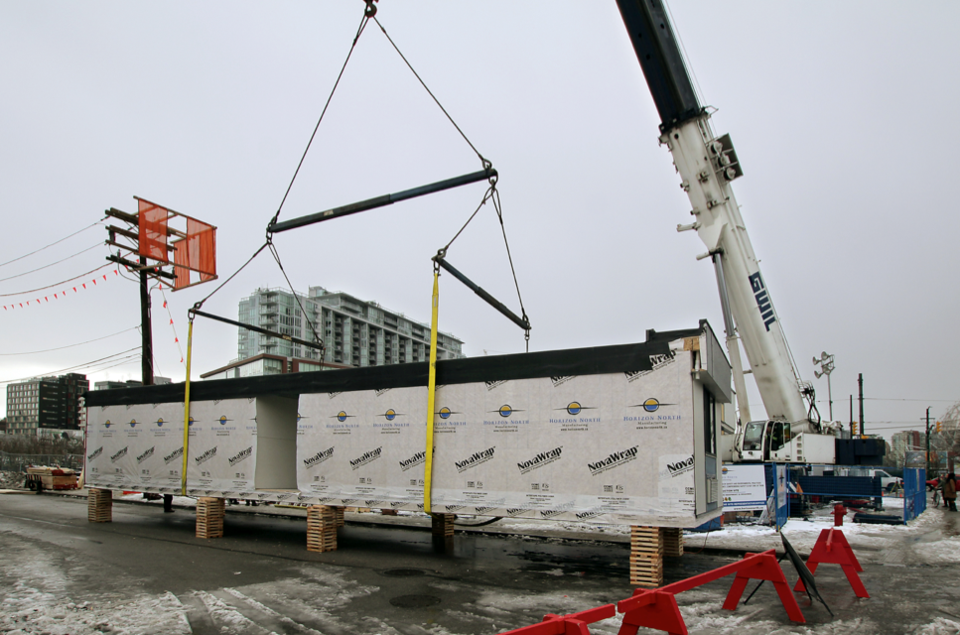
Mukhtar Latif, the city’s chief housing officer and CEO of the Vancouver Affordable Housing Agency, said Sole Food Street Farms, which operates next to the site, promised to offer employment opportunities to tenants once they move in.
The housing agency is developing 2,500 permanent housing units in the city by 2021 using city sites — 1,000 are in the planning and design stage and will be constructed over the next two to three years.
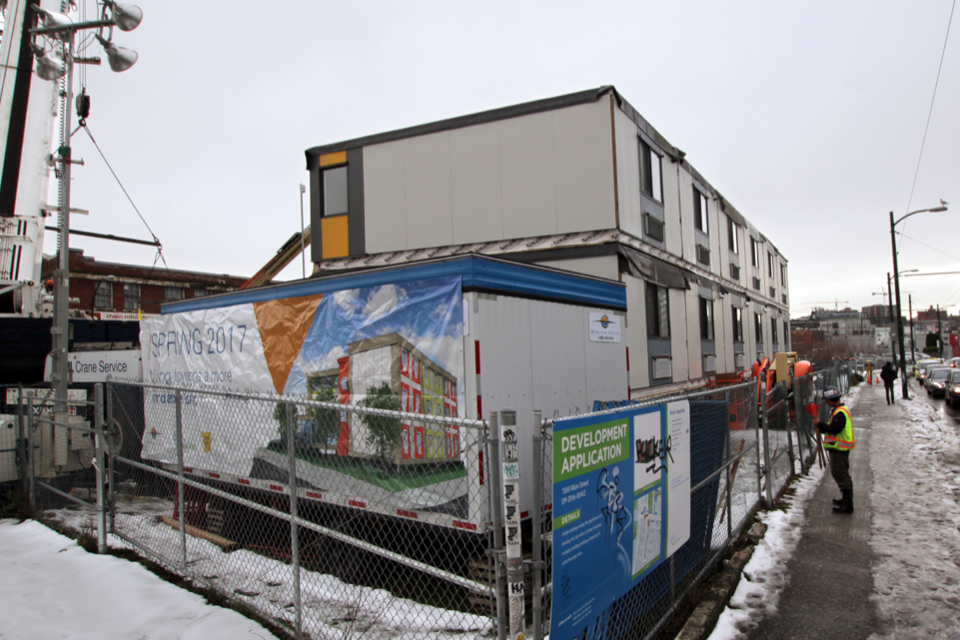
“We are looking at this as an opportunity to be interim housing while new supply comes forward, not just from the social housing sector, but also through the market rental projects we have developed through the Rental 100 program,” he said.
Latif highlighted the short timeline required to build modular complexes — the contract was awarded to Horizon North in September and the building will open in February. The 40 units were built in less than 30 days, transported to Vancouver from Kamloops in four hours, and installation only takes six days.
When asked why shipping containers weren’t used for the project, Latif said a range of proposals were considered, including ones using shipping containers, steel-frame and wood-frame.
“This was the most cost-effective design,” he said.
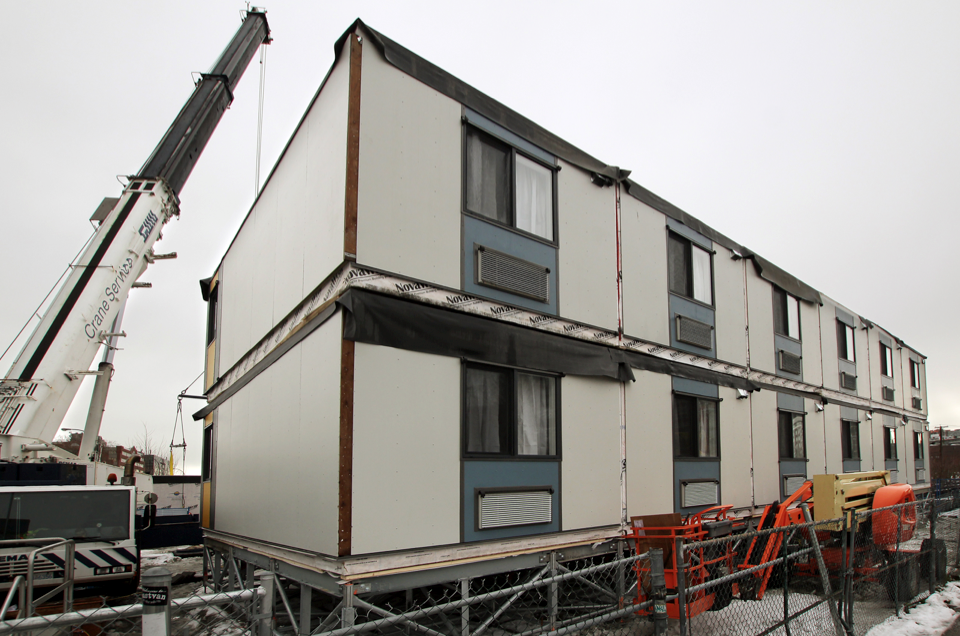
For more stories from the Vancouver Courier, visit www.vancourier.com.
Check out BIV’s podcast for the week of December 20, 2016:

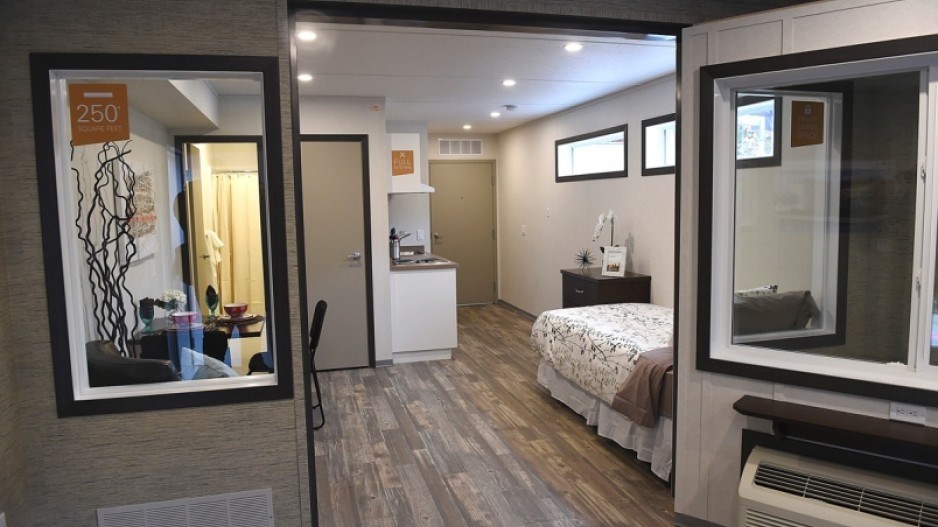

.png;w=120;h=80;mode=crop)
